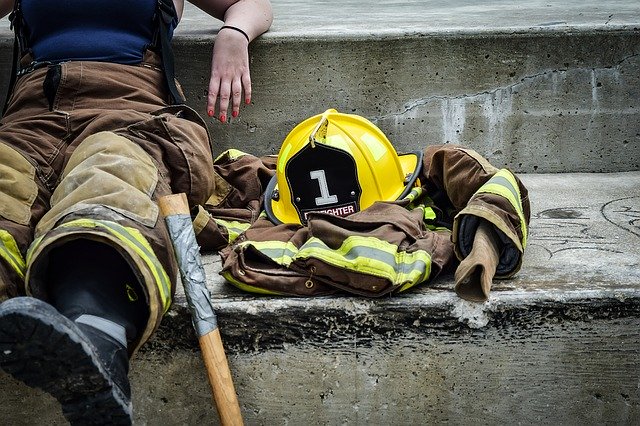A new link between firefighters' contaminated PPE and cancer
Published date: |
|
Modified date: |
|
 It's true that firefighters' job of battling fire, smoke and harsh conditions is inherently risky to their health. However, new research into occupational exposure by the University of Central Lancashire (UCLan)[1] suggests that fire contaminants on UK firefighters' personal protective equipment (PPE) might have a link to higher cancer occurrences (compared with the general population).
It's true that firefighters' job of battling fire, smoke and harsh conditions is inherently risky to their health. However, new research into occupational exposure by the University of Central Lancashire (UCLan)[1] suggests that fire contaminants on UK firefighters' personal protective equipment (PPE) might have a link to higher cancer occurrences (compared with the general population).
The small-scale study[2] investigated firefighters' occupational exposure to polycyclic aromatic hydrocarbons (PAHs) – created from the gases emitted during a fire – and samples revealed marked elevation in cancer risk factors, with skin absorption thought to be the main exposure route.
The presence of PAHs on body surfaces (like the hands and throat), on PPE (like helmets and clothing) and on work surfaces led to the UCLan researchers' conclusion that there is an urgent need to monitor exposure and to conduct long-term follow-up on the health of firefighters.
What's being done to address the issue in the UK?
Anna Stec, Lead Researcher and Professor in Fire Chemistry and Toxicity at UCLan, stressed: 'It is time for change', calling on the UK to do more to tackle the 'growing issue of cancer in firefighters'.
She added: 'If this level of toxic exposure was found in the US or Canada, Government would immediately put measures in place to monitor the health of firefighters and address this. Countries across Europe are also tackling this problem, with Norway, Sweden and Finland working toward identifying their own solutions.'
She calls on the Government to 'protect those working to save the lives of others by providing them with the best preventative medical care, education and support, whilst investing in guidance and research to ensure best practice is adhered to.'
In September, in response to the research findings, UK Chief Fire Officer Chris Davies acknowledged that 'firefighters are contracting certain types of cancer above the population norm'. He gave the assurance that there is an 'incredible amount of work going on' to address the issue.
The National Fire Chiefs Council, in collaboration with the Fire Service Research and Training Trust and the Fire Brigades Union, has now commenced larger-scale research3 into these areas.
How can we support firefighters through standards?
There are already numerous product standards on a variety of firefighters' PPE that ensure that basic health and safety requirements are met.
In addition, British Standard BS 8617:2019, Personal protective equipment for firefighters – Cleaning, maintenance and repair – Code of practice, was launched this year to give the industry view on best practice for cleaning, maintaining and repairing PPE used in firefighting.
The adoption and enforcement of these standards could help with health and safety risks associated with poorly maintained, contaminated or damaged PPE.
The code of practice covers:
- inspection;
- testing;
- cleaning and decontamination;
- drying;
- repair and replacement;
- recording;
- storage and transportation; and
- retirement and disposal of PPE.
It applies to garments, helmets, gloves, footwear and interface components used by firefighters.
Find out more about the standard
You can find more information on the standard through the BSI shop: https://shop.bsigroup.com/en/ProductDetail/?pid=000000000030379245&_ga=2.42665701.1923230839.1574933801-188411681.1574422074
Click here to provide feedback

